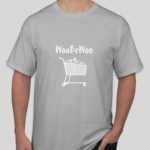How to Add a Shop Page in WooCommerce: A Comprehensive Guide
Creating a dynamic and user-friendly online store is crucial for any eCommerce business. WooCommerce, a popular plugin for WordPress, offers a robust platform to set up a shop with ease. In this guide, we’ll walk you through the steps to add a shop page in WooCommerce, ensuring your online store is not only functional but also optimized for search engines.
Why You Need a Shop Page in WooCommerce
Before diving into the steps, let’s understand the importance of having a dedicated shop page:
- **Central Hub for Products**: A shop page acts as a central hub for all your products, making it easier for customers to browse and purchase.
- **Improved User Experience**: A well-organized shop page enhances the user experience, encouraging visitors to explore more.
- **SEO Benefits**: A properly optimized shop page can improve your site’s visibility in search engine results, driving more organic traffic.
- Go to your WordPress dashboard.
- Navigate to Plugins > Add New.
- Search for “WooCommerce” and click **Install Now**.
- Once installed, click **Activate**.
- After activation, you’ll be prompted to run the WooCommerce setup wizard.
- Follow the on-screen instructions to configure your store’s basic settings, including currency, payment methods, and shipping options.
- Go to your WordPress dashboard.
- Navigate to Pages > Add New.
- Enter a title for your page, such as “Shop”.
- Go to WooCommerce > Settings.
- Click on the **Products** tab.
- Under the **Shop pages** section, select the page you just created from the dropdown menu labeled “Shop Page”.
- Click **Save Changes**.
- Use the WordPress Customizer (Appearance > Customize) to adjust the layout, colors, and typography of your shop page.
- If your theme supports it, you can also use page builders like Elementor or WPBakery to create a custom layout.
- Organize your products into categories and tags to make it easier for customers to find what they’re looking Explore this article on How To Create A Woocommerce Shop Page for.
- Go to Products > Categories to create and manage product categories.
- Highlight certain products on your shop page to draw attention to best-sellers or new arrivals.
- Use WooCommerce shortcodes to display specific products, categories, or deals.
Setting Up WooCommerce
Before adding a shop page, ensure you have WooCommerce installed and activated on your Discover insights on How To Set Shipping Cost In Woocommerce WordPress site. If not, follow these steps:
1. Install WooCommerce:
2. Set Up WooCommerce:
How to Add a Shop Page in WooCommerce
Once WooCommerce is set up, you can proceed to add a shop page. Here’s how:
Step 1: Create a New Page
Step 2: Assign the Page as Your Shop Page
Step 3: Customize Your Shop Page
Now that your shop page is set up, it’s time to customize it to match your brand and enhance user experience.
#### Customize the Layout
#### Add Product Categories and Tags
#### Display Featured Products
- Compare
Product compare
 products
products
Optimizing Your Shop Page for SEO
To ensure your shop page ranks well in search engine results, follow these SEO best practices:
- **Use Descriptive Titles and Meta Descriptions**: Craft compelling titles and meta descriptions that include relevant keywords like “shop”, “page”, and “WooCommerce”.
- **Optimize Images**: Use high-quality images and optimize them for fast loading speeds. Include alt tags with relevant keywords.
- **Internal Linking**: Link to your shop page from other parts of your website to boost its authority.
- **Mobile Optimization**: Ensure your shop page is mobile-friendly, as a significant portion of users browse and shop on mobile devices.
Conclusion
Adding a shop page in WooCommerce is a straightforward process that significantly enhances your online store’s functionality and user experience. By following this comprehensive guide, you can create a well-organized, SEO-optimized shop page that not only attracts more visitors but also converts them into customers. Remember, the key to a successful online store lies in continuous optimization and staying updated with the latest eCommerce trends.
